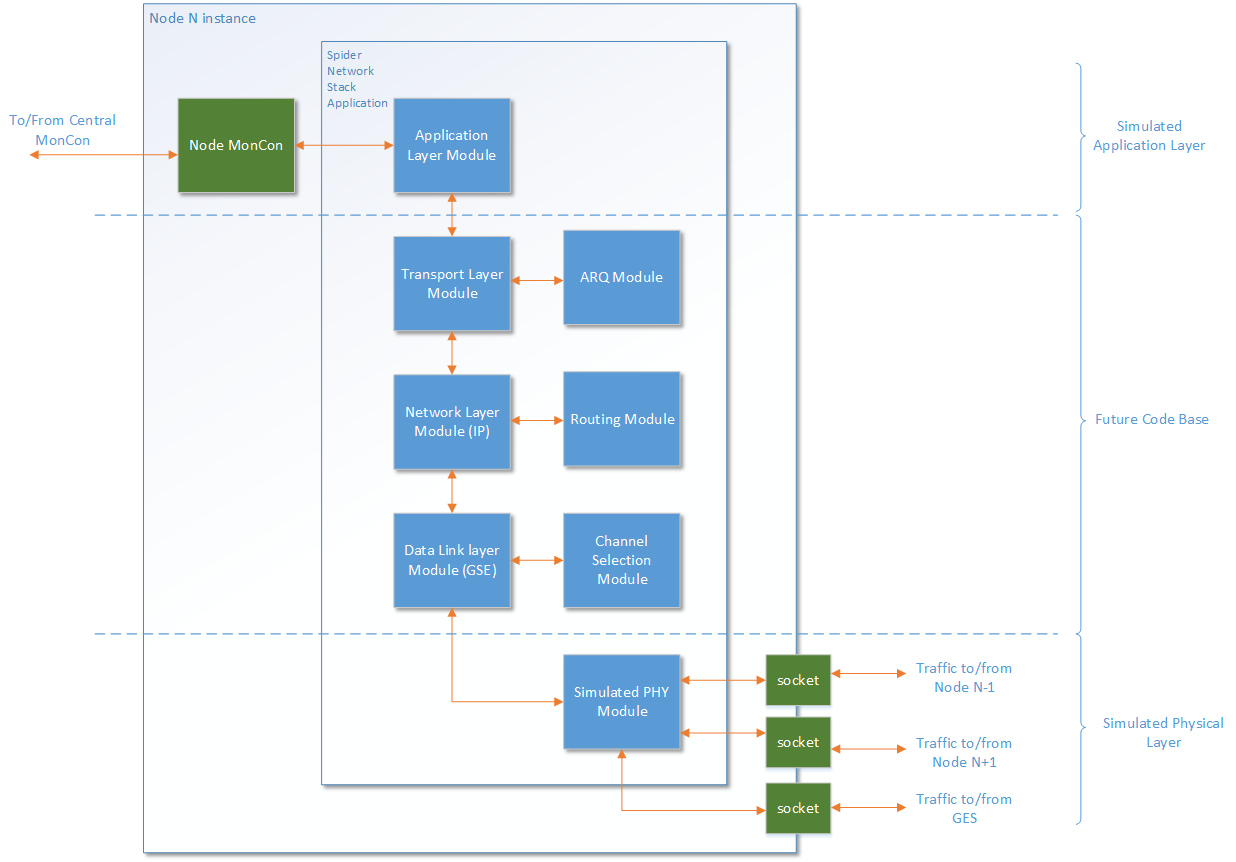
-
StatusCompleted
-
Status date2020-09-21
-
Activity Code5E.006
Miniaturization and distributed architectures have enabled the emergence of new business models based on small satellite constellations. A variety of satellite applications such as earth observation, machine-to-machine, and internet-of -things are being achieved in such constellations over the past years. Currently, the data handling in these constellation networks are mainly based on ground/user links. However, when we look at the future planning, inter-satellite links are becoming very important for future possible small satellite constellations which will improve the quality of data services of these types of constellations. In this context, the main goal of this Spider Project is to design and develop the link and network layers mechanisms required to support end-to-end data connectivity over inter-satellite links in small satellite constellation networks. The whole study was based on a single plane topology (unidirectional or bidirectional) as illustrated in the next figure. Hence, the development of a testbed allowing the demonstration of the link and network layers mechanisms is an integral part of the project objective. Several simulations to assess functional and performance behaviour in simulated real life scenarios are also covered by this project activities.
Because the market and the usages of ISLs are not yet settled, arbitrating the engineering trade-offs in a meaningful way, without compromising the relevance of the final solution is a challenge.
Another challenge relates to the dynamic behaviour of the constellation topology due the commissioning and decommissioning of the network nodes for maintenance purposes. This non-static environment is also due to the orbiting movements leading to the handover from one node to its neighbouring node when connecting the constellation to earth ground station.
The main benefit of such a network stack in small satellites constellations resides in its ability to route traffic from one node to another node (including the ground station equipment) with very low latency communication path. Hence future planned LEO constellations (e.g. M2M or IoT) might enable innovative satellite services for which low-latency is crucial for end-users experience.
Another advantage is related to its memory footprint enabling a possible high integration of the communication protocol stack within the transponder, hence offloading the OBC from such networking services.
The test-bed includes the host software application in charge of the configuration, initialization, monitoring and control, simulated scenarios for the constellation.
The test-bed also includes the satellite nodes implementing the small satellites networking protocol stack (incl. channel selection algorithm, MAC scheduling and packet forwarding, ARQ + flow control + congestion control mechanism, routing scheme).
The test-bench high-level architecture is illustrated with the following picture. One can see the mapping of the network functions towards the OSI model. It’s worth noting here that the simulated PHY module indicated here below is based on another ESA project executed by Antwerp Space (Ka-band LEO-LEO ISL for Small Satellites ESA 4000117148/16/UK/ND)

The following tasks are covered by the project activities:
- Consolidate high-level end-user requirements with regards to the network and link layer protocols in future scenarios.
- Derive the detailed technical requirements for the network and link layers.
- Propose the high-level architecture of the testbed so that it can demonstrate the network and link layer protocols and functions.
- Design of network and link layer mechanisms.
- Detailed design of the demonstration testbed.
- Testbed development and demonstration results.
- Derive future recommendations and roadmap towards in-orbit demonstrations of the designed network and link layers.
This project is now completed and successfully closed.




